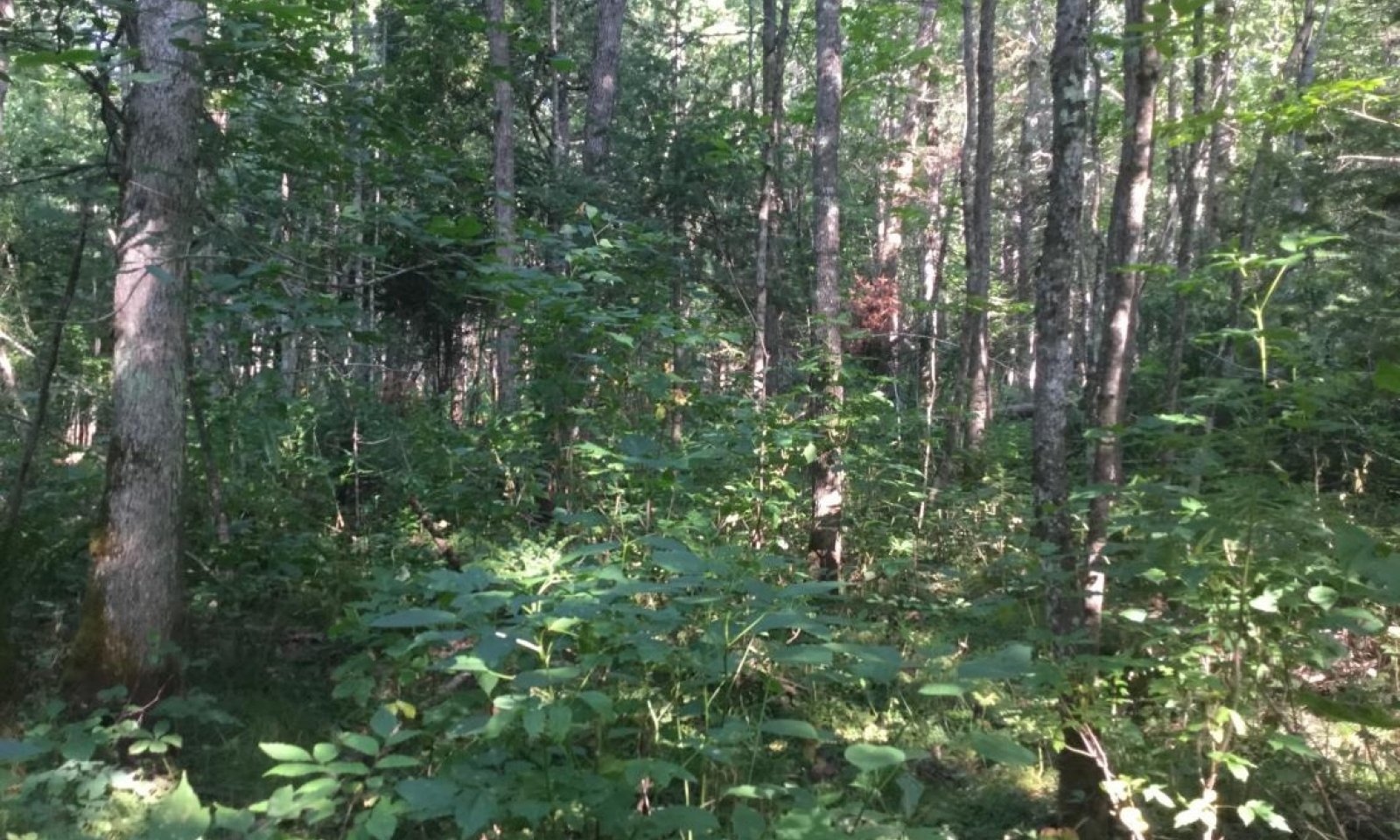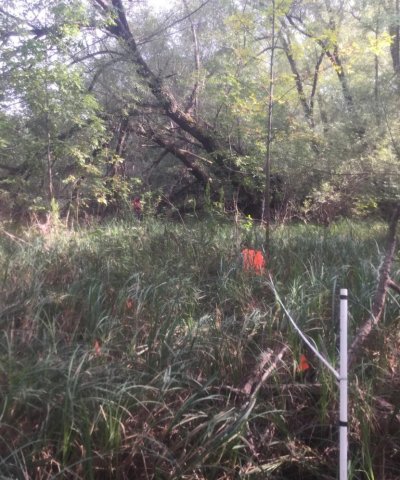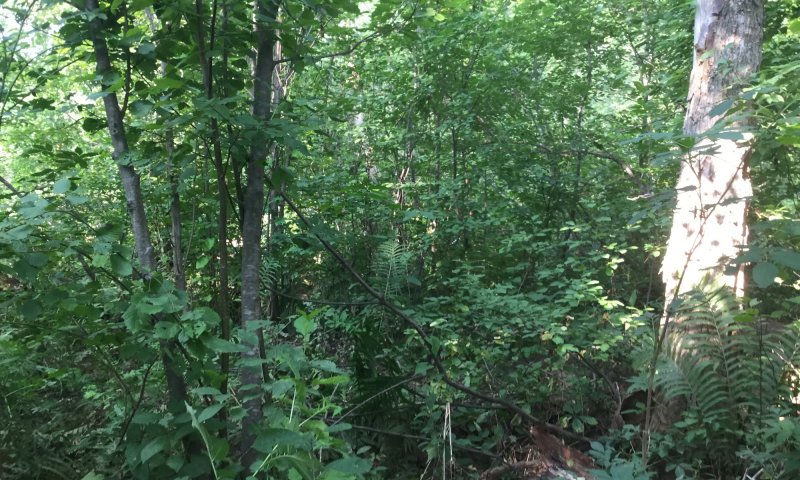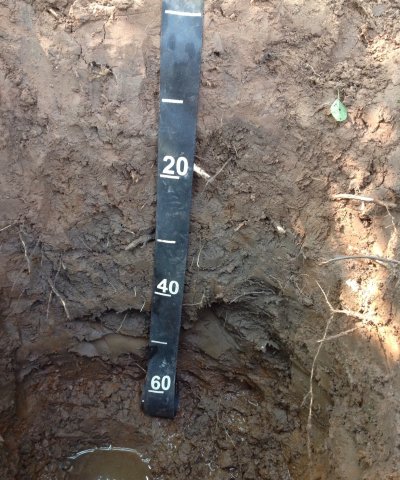

Natural Resources
Conservation Service
Ecological site F092XY005WI
Wet Floodplains
Last updated: 4/09/2020
Accessed: 12/16/2025
General information
Provisional. A provisional ecological site description has undergone quality control and quality assurance review. It contains a working state and transition model and enough information to identify the ecological site.
MLRA notes
Major Land Resource Area (MLRA): 092X–Superior Lake Plain
The Wisconsin portion of the Superior Lake Plain (MLRA 92) corresponds very closely to the Superior Coastal Plain Ecological Landscape published by Wisconsin Department of Natural Resources (WDNR 2015). The following brief overview of this Ecological Landscape is borrowed from that publication. The Superior Coastal Plain is bordered on the north by Lake Supe¬rior and on the south by the Northwest Sands, Northwest Lowlands, and North Central Forest Ecological Landscapes. The total land area is approximately 12 million acres, which mostly consists of privately-owned forestland. The climate is strongly influenced by Lake Superior, resulting in cooler summers, warmer winters, and greater precipitation compared to more inland locations. The most extensive landform in this ecological landscape is a nearly level plain of lacustrine clays that slopes gently northward toward Lake Superior. The coastal plain is cut by deeply incised stream drainages and interrupted by the comparatively rugged Bayfield Peninsula.
During the Late Wisconsin glacial period, this area was covered with the advancing and retreating lobes of Superior and Chippewa. The landscape was rippled with moraines, but they were subdued by deposition of lacustrine materials. As the glaciers receded, glacial lakes riddled the landscape—most notably, Glacial Lake Duluth. The glacier receded eastward, exposing the western Lake Superior Basin. The ice covered the eastern basin, blocking the outlet of the lake, and continued to recede and contribute meltwaters. The deep, red clay was deposited during this period of glacial lakes. The meltwaters from the glacier also contained sands which deposited along the edge of the glacial lakes as beach deposits. Deep, narrow valleys have since been carved by rivers and streams flowing north into Lake Superior.
Historically, the Superior Coastal Plain was almost entirely forested. Various mixtures of eastern white pine (Pinus strobus), white spruce (Picea glauca), balsam fir (Abies bal¬samea), white birch (Betula papyrifera), balsam poplar (Popu¬lus balsamifera), quaking aspen (Populus tremuloides), and northern white-cedar (Thuja occidentalis) occurred on the fine-textured glacio-lacustrine deposits bordering much of the Lake Superior coast. Sandy soils, sometimes interlayered with clays, occur in some places. Such areas supported forests dominated by eastern white pine and red pine (Pinus resin¬osa). Eastern white pine was strongly dominant in some areas, according to mid-19th century notes left by surveyors of the federal General Land Office (Finley, R. 1976). Dry-mesic to wet-mesic north¬ern hardwoods or hemlock-hardwood forests were prevalent on the glacial tills of the Bayfield Peninsula. Large peatlands occurred along the Lake Superior shoreline, associated with drowned river mouths.
Classification relationships
Habitat Types of N. Wisconsin (Kotar, 2002): All sites in this ES key out to Fraxinus nigra – Abies balsamea / Impatiens capensis [FnAbI].
Biophysical Setting (Landfire, 2014): This is ES is mapped as as Eastern Boreal Floodplain, Boreal Acidic Peatland System, Laurentian – Acadian Alkaline Conifer – Hardwood Swamp, and Laurentian – Acadian Sub-boreal Mesic Balsam Fir-Spruce Forest. The ES is most similar to Eastern Boreal Floodplain.
WDNR Natural Communities (WDNR, 2015): This ES is most similar to Northern Hardwood Swamp.
USFS Subregions: Superior-Ashland Clay Plain Subsection (212Ya); May contain small areas of Ewen Dissected Lake Plain Subsection (212Jo), Winegar Moraines Subsection (212Jc), Gogebic-Penokee Iron Range Subsection (212Jb), and NorthShore Highlands Subsection (212Lb)*
Major Land Resource Area (MLRA): Superior Lake Plain (92)
Ecological site concept
Wet Floodplains have a small extent in MLRA 92. They occur scattered along the rivers and streams that flow into Lake Superior. These sites consist of poorly drained soils formed in loamy alluvium. They are palustrine wetlands that are saturated throughout the year and are subject to flooding and ponding. The year-round saturation of these sites is what differentiates this ES with Seasonally Dry Floodplains. This ES receives most of its water through stream overflow but remains saturated with poorly drained soils and the high groundwater table. Typical vegetation is mixed hardwoods and conifers, including black ash, American elm, northern white cedar, black cherry, and balsam fir. Ground flora includes ferns, marsh marigold, grasses, and sedges.
Similar sites
| F092XY004WI |
Seasonally Dry Floodplains These sites are moderately well to somewhat poorly drained soils that formed in sandy, loamy, or clayey alluvium. Sites are subject to brief periods of flooding throughout the growing season, but ponding is not common. Soils are located along rivers and experience flooding during stream overflow. Soils range from strongly acid to neutral. These sites are located near Wet Floodplains on the same landform. These sites have a coarser texture with more drainage, so they do not remain constantly saturated. |
|---|---|
| F092XY007WI |
Wet Loamy or Clayey Lowlands These sites are poorly drained soils formed in loamy or clayey glaciofluvial and silty glaciolacustrine sediments. They have a seasonally high water table and remain saturated for much of the growing season, creating hydric conditions. HGM criteria: recharge, Depressional. These sites are located on different landforms, and do not remain saturated as long as Wet Floodplains. |
| F092XY002WI |
Mucky Swamps The soils are different, but the vegetation is similar to Wet Sandy Lowlands. |
Table 1. Dominant plant species
| Tree |
(1) Fraxinus nigra |
|---|---|
| Shrub |
Not specified |
| Herbaceous |
(1) Impatiens capensis |
Click on box and path labels to scroll to the respective text.
Ecosystem states
State 1 submodel, plant communities
| 1.1A | - | Flooding frequency and duration decreases |
|---|---|---|
| 1.2A | - | Flooding frequency and duration increases |
| 1.2B | - | Very infrequent flooding |
| 1.3B | - | Flooding frequency and duration increases dramatically |
| 1.3A | - | Flooding frequency and duration increases moderately |



